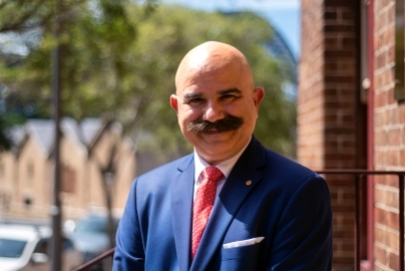Construction Law International - June 2021 - Diversity and Inclusion Initiative
Thursday 24 June 2021

Questionnaire
Dr Kourosh Kayvani
Principal, Forensic technical services, HKA
1. What is your name and current job, role or title?
Dr Kourosh Kayvani, Principal, HKA. I am also an Adjunct Professor at the School of Civil and Environmental Engineering at the University of NSW in Sydney, Australia.
2. When starting out in your career, did you have any role models?
I had two uncles in Iran (that is where I am from), who were successful civil engineers. They inspired me to study civil/structural engineering. Later on, I had a couple of professors at Tehran University who were also famous consulting engineers. They were my role models in how to become a successful practising engineer while staying involved in academia. My father was a judge, and my mother was a high school teacher. They have been my role models in so many aspects of my personal and professional life, particularly in acting ethically and treating people equally and respectfully.
3. What advice did you receive which helped you progress in your career?
Keep a positive mindset irrespective of the circumstance. Give it your best and your efforts will be rewarded. Never stop learning. Be the best version of yourself rather than try to compete with others. Build meaningful relationships.
4. Do you think that diversity is improving in your particular professional area?
Yes, it has been over the last 20 years or so. I started my career in Australia 25+ years ago as a migrant engineer who was from a non-English speaking background. Back then, most of my colleagues were male Australian engineers with European backgrounds. These days, there is much better diversity in the engineering profession in Australia. However, I believe we still have a long way to go. The Aboriginal Australians are particularly under-represented in our workforce.
5. What positive steps have you seen organisations take to progress diversity and inclusion?
Creating an environment that allows people to bring their whole self to work. Implementing measures that facilitate the return to work of woman professionals after maternity leave. Flexible working policies. Using diverse teams in all decision-making.
6. What aspects do you think are still ripe for improvement in organisations?
Addressing conscious and unconscious biases in all settings is something we need to strive for. We need to make sure that the dominant organisational culture (particularly at leadership level) does not stifle freedom of expression and inclusion of people from diverse background. Creating specific pathways for better workforce participation and progression for groups of the society who are from under-represented groups in terms of gender, age, ethnicity, and linguistic and socio-economical background.
7. What are the indicators of when a reasonable diversity balance is reached?
When participation of all groups of the population in workplaces are representative of their presence and potential in the society. And when these groups are all included in all levels of decision-making.
8. What do diversity and inclusion mean to you and why are they important?
For me, diversity and inclusion are ultimately about equal rights and opportunities. They are about people being valued for who they are as a human being irrespective of their gender, age, ethnicity, and background.
9. What impact has the Covid-19 pandemic had on diversity in your professional area?
The Covid-19 pandemic has had a disproportionate impact on disadvantaged groups in society. As a result, I feel the momentum in achieving better diversity in the workforce has slowed, and may have even reversed, in some sectors of the economy.
